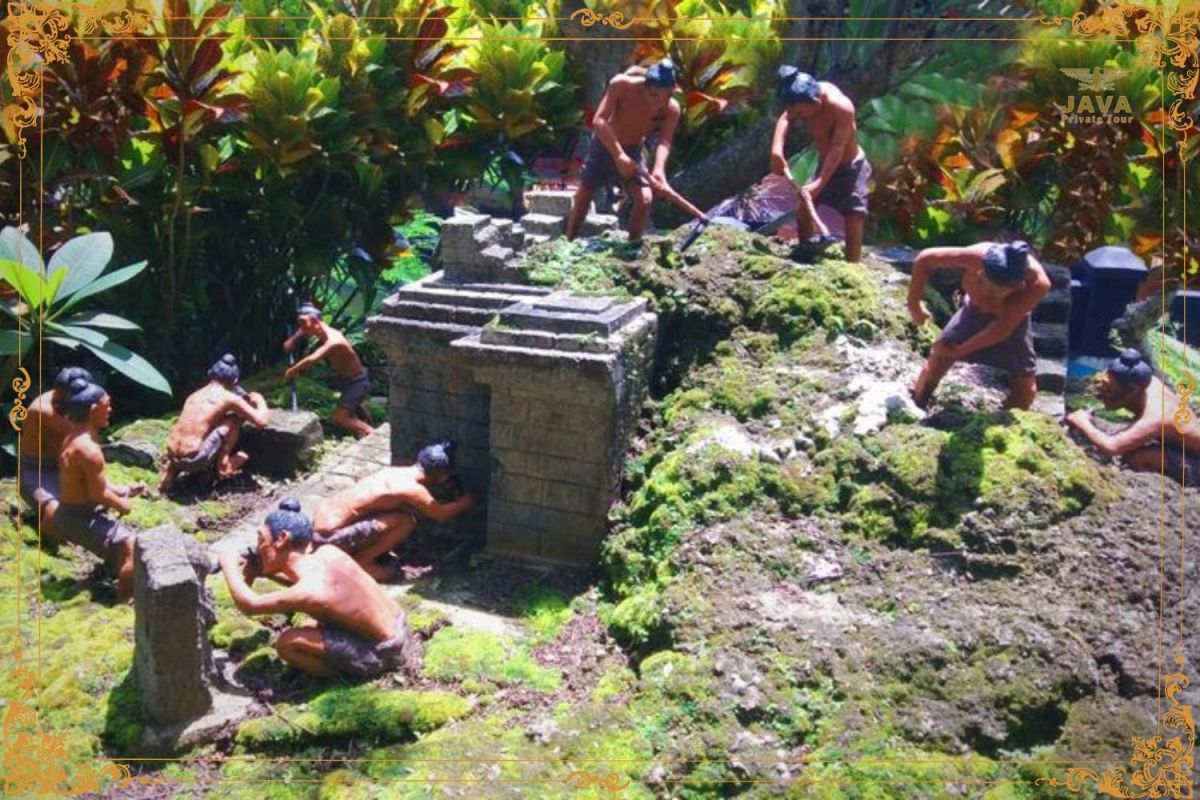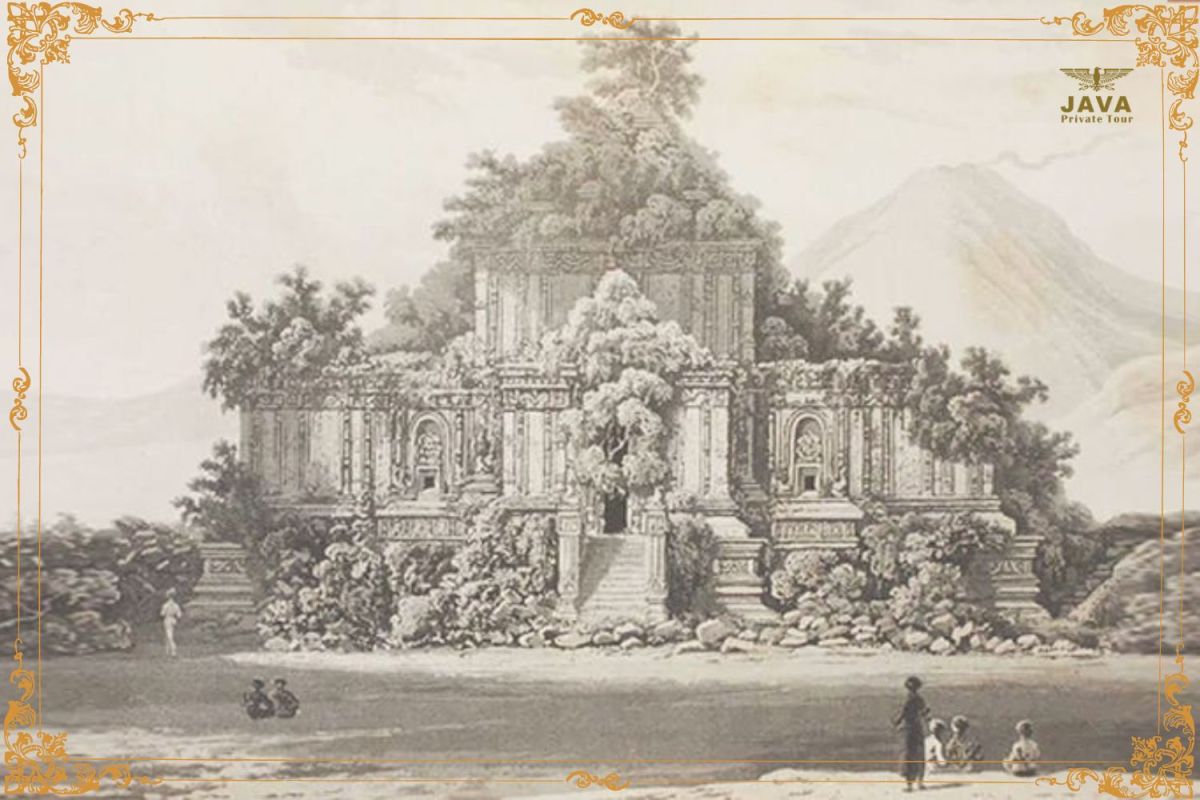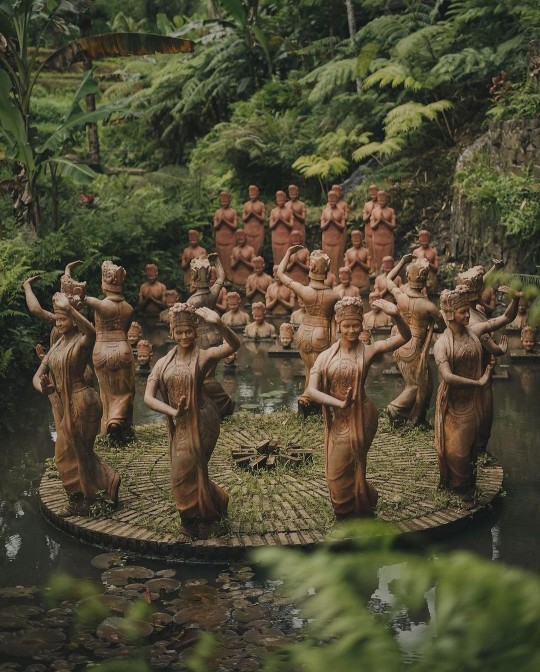javaprivatetour.com – Welcome to Java, a land steeped in grand history and precious tales from the past. Have you ever wondered how ancient Javanese communities constructed their homes and created majestic temples like Borobudur and Prambanan? Let’s delve into the wonders of ancient Javanese building technology that continues to astonish us today.
Revealing the Skills of Ancient Javanese Society
The towering temples of Java, especially Borobudur, transport us back to an era where technical skills and the art of construction reached their zenith. In the reliefs of Borobudur, we witness how the ancient Javanese used various specialized tools for carpentry, including a variety of axes that reflect the advanced state of woodworking during that time.
Interestingly, the prowess of ancient Javanese society wasn’t confined to temple construction but extended to their homes as well. Various materials, from bamboo to wood, were employed in building houses, and the reliefs of Borobudur stand as the sole source of data providing insights into this skill.

Bamboo as the Primary Building Material
Bamboo, flourishing abundantly in Java, emerged as the primary material for constructing buildings due to its plentiful availability and economical nature compared to wood. Place names such as Gunungpring Village (bamboo forest) near Borobudur reflect the bamboo resources used by the local community.
A 9th-century inscription connected to Mendut Temple references Venu Vana, translating to “bamboo forest” in Sanskrit. This underscores the vital role bamboo played in the lives of ancient Javanese communities.
Specific Guidelines in Temple Construction
In the Negarakertagama manuscript, an ancient text depicting the intricacies of Hindu art and construction, Dwi Budi Harto mentions that ancient Javanese communities adhered to specific guidelines when constructing temples.
In the world of Hindu art, particularly in the creation of sacred structures, adherence to guidelines found in instructional texts, such as the Cilpasastra, was crucial. The Negarakertagama also describes the division of labor in the temple construction process. Some were tasked with sanctifying the ground, while others adorned the temple surroundings with art.
Artisans and gardeners beautified the temple surroundings, placing stone upon stone from the foundation to its crown. Individuals were also designated to place sculptures, adding both ornamentation and sacred significance to the temple. The perfection of the temple’s construction was an ongoing effort, with the process taking decades.
The mystery surrounding Prambanan, often said to have been built in a single night, is estimated to have taken hundreds of years to complete. The legend of Prambanan’s construction, passed down through generations, adds to the allure of these ancient marvels that continue to stand tall in Java.

Discover Java’s Ancient Wonders with Java Private Tour
As you embark on your journey to explore the architectural marvels of Java, consider enriching your experience with Java Private Tour. Our certified local guides are not only fluent in English but are also friendly and knowledgeable. Java Private Tour offers flexibility in scheduling, tailoring the experience to your preferences. With a fleet of private vehicles, ranging from sedans to tourist buses, and a team of licensed professionals, including drivers and guides, Java Private Tour comes highly recommended by embassies of satisfied friendly nations.
For first-time visitors to Java, let Java Private Tour be your reference, barometer, and recommendation as you immerse yourself in the captivating history and architectural splendors of this remarkable island. Explore Java with us, where every step is a journey through time and culture. BOOK HERE to begin your adventure today.
You May Also Like
 Unveiling Ancient Javanese Fashion Through Karmawibhangga Reliefs
Unveiling Ancient Javanese Fashion Through Karmawibhangga Reliefs
 The Mystical Tale of Roro Jonggrang and Prambanan Temple
The Mystical Tale of Roro Jonggrang and Prambanan Temple
 Unveiling Java’s Mystical Melodies: Angklung Buhun, the Sacred Soundtrack of Baduy Society
Unveiling Java’s Mystical Melodies: Angklung Buhun, the Sacred Soundtrack of Baduy Society
 Learning the Ancient Art of Writing on Palm Leaves in Java Island
Learning the Ancient Art of Writing on Palm Leaves in Java Island
 Journey of the Soul: Pabbajja Samanera Borobudur 2023 Experience
Journey of the Soul: Pabbajja Samanera Borobudur 2023 Experience












